We’ll see you in there.
Connect to customize your food & drink discovery.
By signing up you agree to our Terms of Service and Privacy Policy.
Ramen
Kaminari Ramen Bar
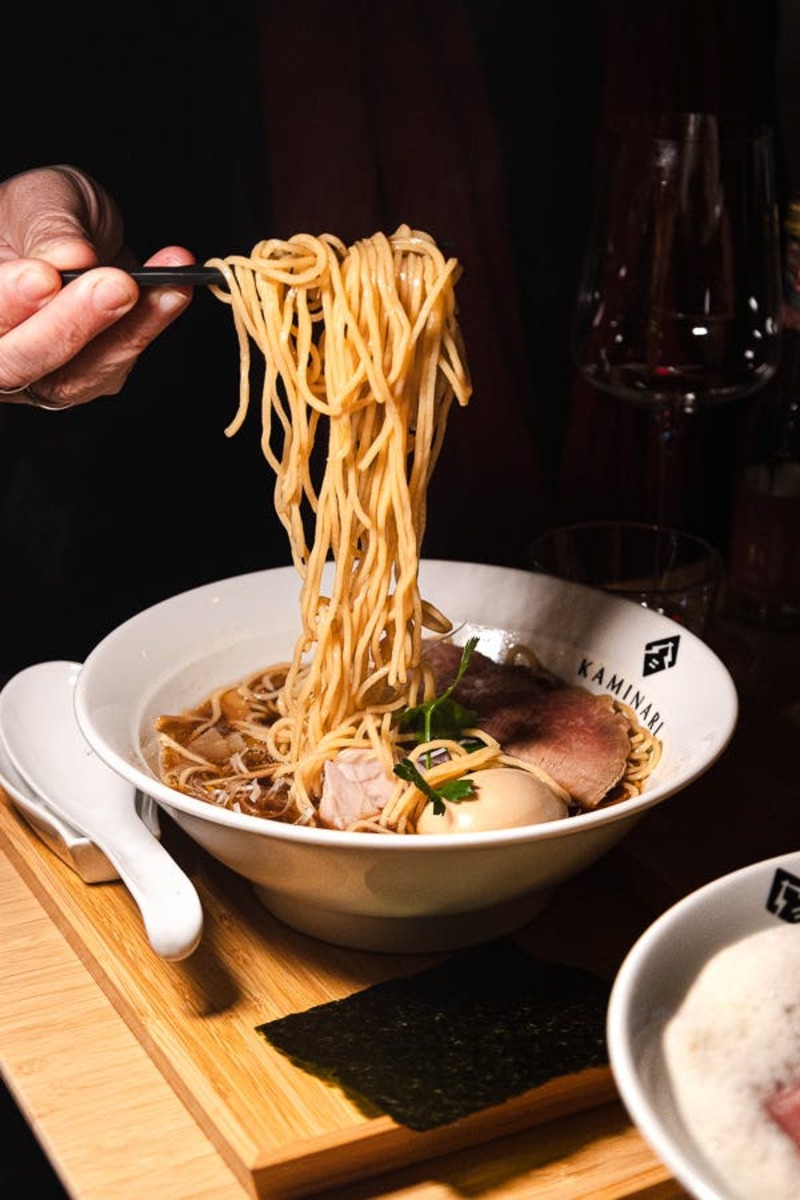
Although Kaminari bills itself as a Tokyo-style ramen bar, it’s really all about the noise.
Not the noise of traffic rumbling by outside on Queen Street West. Nor the noise of slurping (ramen) or sipping (Japanese beer, premium sake, or cocktails with an Asian twist), although both are strongly encouraged.
No, quite relevantly it turns out, Kaminari is the Shinto god associated with noise, specifically thunder and storms. Powerful noise. Natural noise. Noise that can shape an environment, create a vibe and forge a community, such as the one that’s been gradually coalescing at this mellow Parkdale soup-and-sake, chill-and-chat joint.
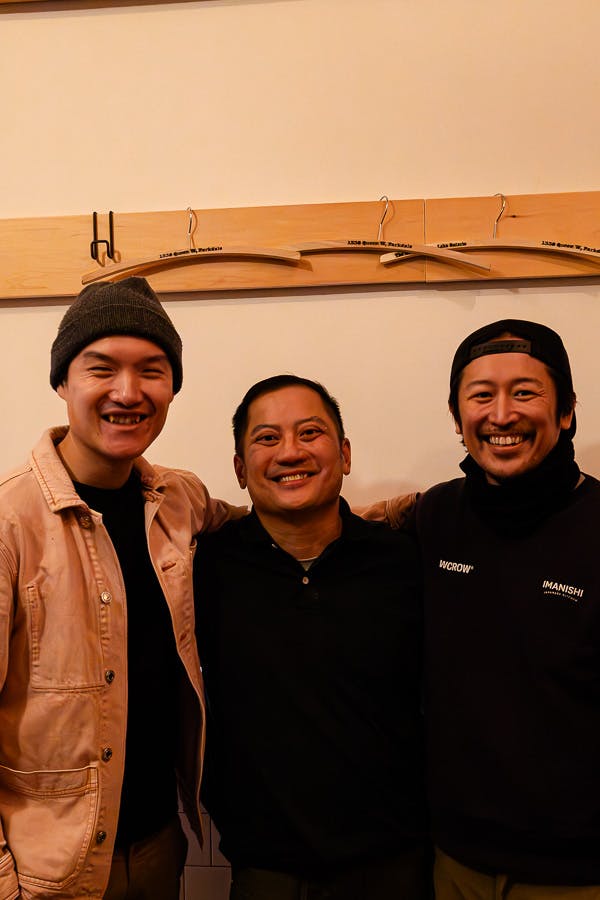
The noise factor was fundamental to founding partners, Daiju Matsuura and Kon Tran. Both experienced restaurateurs – Matsuura is a partner in Imanishi Sando Bar and Tran co-owns Vancouver’s DD mau ) – the duo didn’t want to reproduce a run-of-the-mill ramen place where customers come in, scarf down the steaming contents of their bowls, and satiated, hightail it back to their busy lives.
At Kaminari, the idea is for customers to kick back and stick around, nibble on snacks, nurse a drink or three, and soak up whatever’s on the sound system, usually some mixture of lounge-inducing jazz, soul and funk that gets a little louder as the night grows longer.
“Everything here revolves around Kaminari,” confesses Tran. “On a busy night, there’s so much energy and so much noise.”
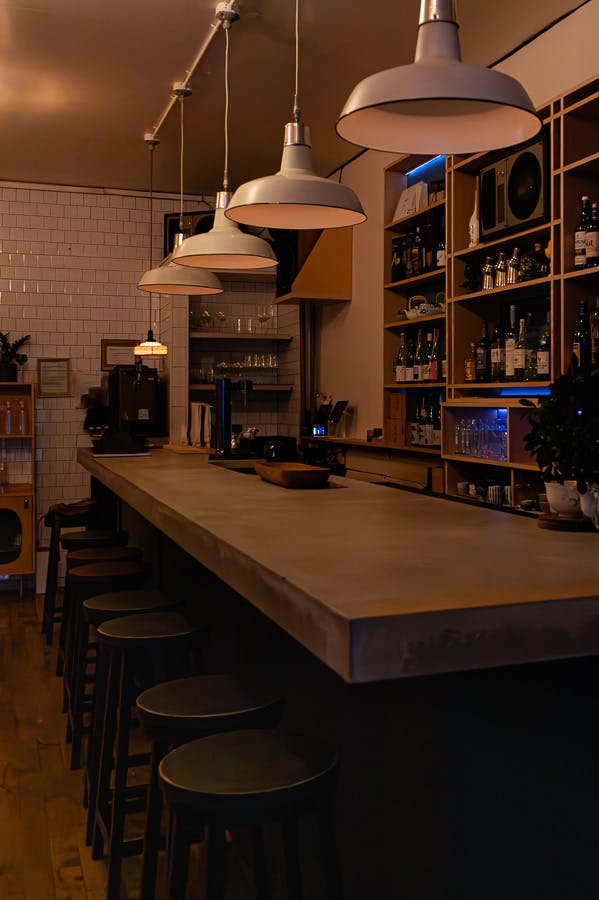
This isn’t to say that Kaminari is noisy. The interior is quietly minimalist, awash in soothing whites and natural woods. Soft ambient lighting and the honey glow of candles set a tone of warmth and intimacy. As a bonus, there’s also a very spacious – and heated! – backyard patio.
Tran is quick to clarify that while he’s all for noise, he very much wants guests to be able to listen to good music while also conversing and actually hearing what their interlocutors are saying. As proof, he indicates an entire wall covered with a series of framed panels, which turn out to be kimono strips. Although their decorative motifs conjure blurred planets in a dark galaxy, the kimonos also stylishly double as sound absorbers that suck up ambient noise.
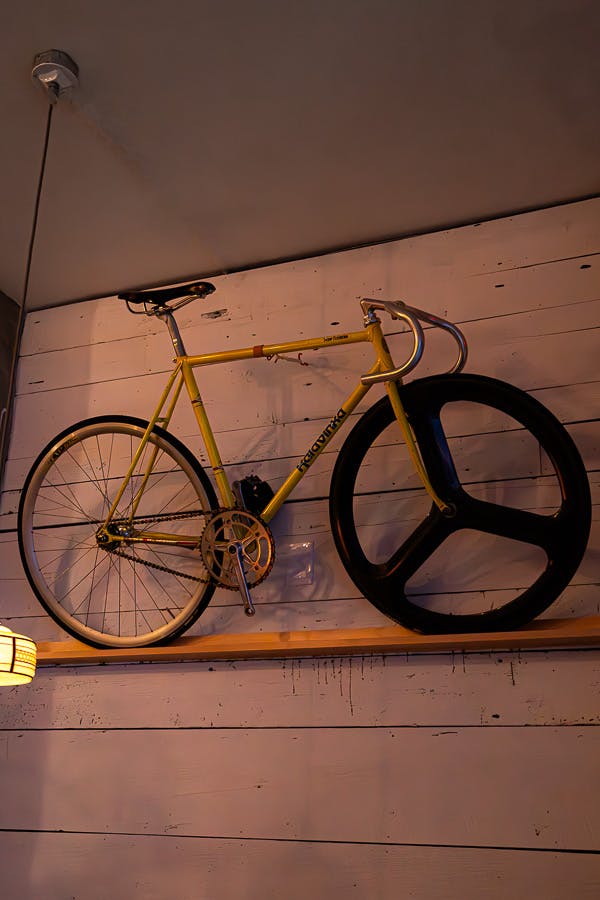
Because they actually want to hang out and not just work at Kaminari, Matsuura and Tran have filled the interior with favourite keepsakes from home. At the entrance is a handsome 100-year-old carved wooden door rescued from a Japanese demolition site. Behind the bar, keeping the sake bottles company, is Tran’s prized collection o fKAWS figures. Pride of place is given to Matsuura’s treasured Kalavinka bike (Kalavinka, a bird sacred to Buddhists, is Sanskrit for “a beautiful sound”), mounted like an installation on a wall.
Such elements set the stage for Kaminari’s raison d’etre: its ramen. At present, there are four options, all made with the same foundational chicken broth.
When choosing what to order, you can select one of two traditional Tokyo-style flavours: Shio (literally “salt”) isn’t overtly salty at all, but rather light and refreshing while shoyu (soy) boasts deeper, umami notes.
Once you’ve decided upon a flavour, you’ll have to make a style decision – opting for either clear (chintan) or creamy “white” (paitan) ramen.
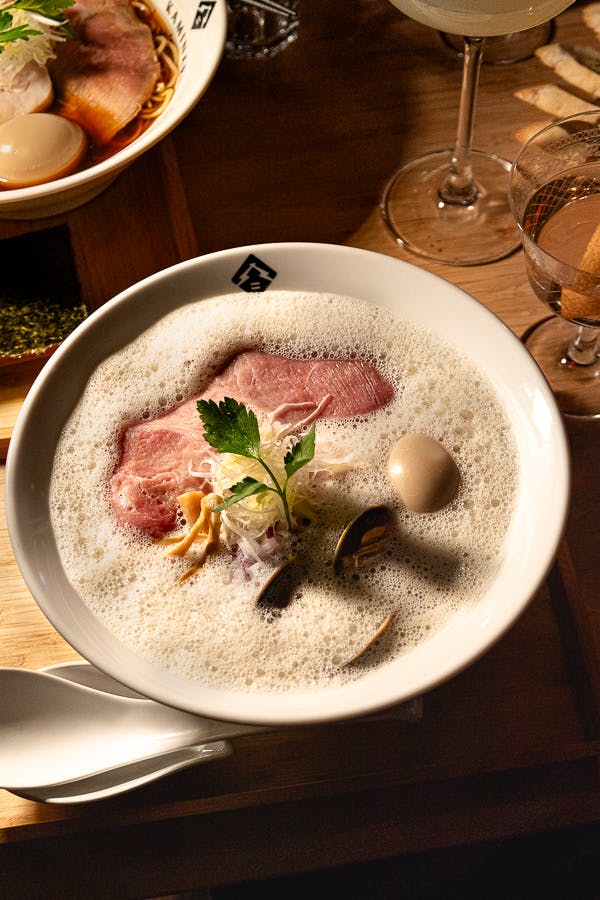
If you take the creamy route, rest assured that no dairy is involved. Rather the “creaminess” is created by “basically boiling the crap out of the chicken carcass” (Tran’s no-nonsense description) until it’s well on its way to disintegration. At this point, it goes through an emulsification process whereby the marrow and fat content are aerated, creating a velvety texture that nonetheless retains its natural flavours. The entire process takes 48 hours, an effort that is discernible when a large, steaming, bold but beckoning bowl of Creamy Shio or Soy is set down in front of you.
“Ramen culture is all about wanting to drink the entire bowl of broth,” says Jacky, the general manager. Quaffing every last drop can be challenging in places that resort to high levels of MSG, but Kaminari’s uncompromising use of all-natural ingredients produces broth that is clean, almost pure. In addition to noodles, the bowl of Creamy Shio is served with slices of tender pork and chicken chashu and the unusual addition of clams in the shell. Garnishes include jammy marinated eggs, bamboo shoots, Japanese leeks, radishes and red onions.
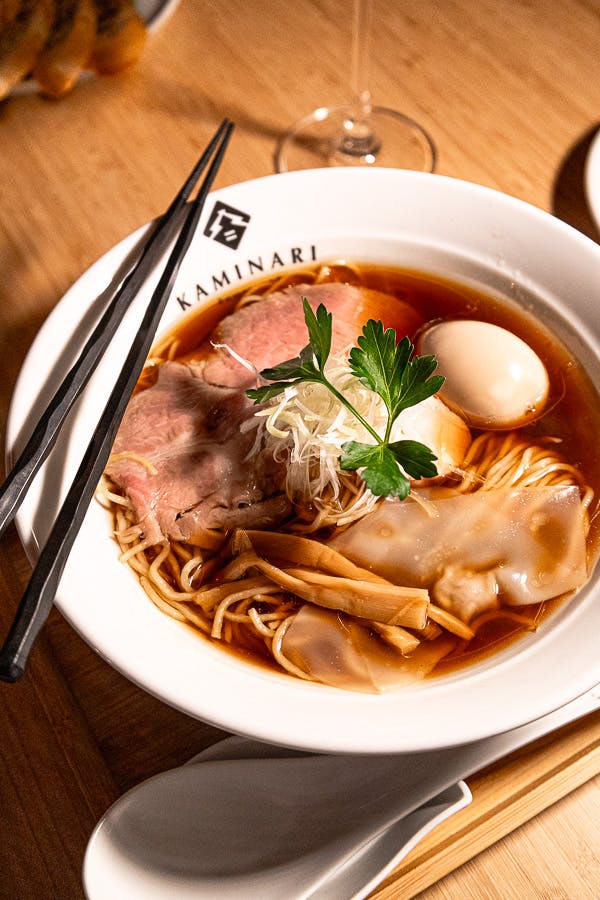
Darkened by soy sauce, the transparent waters of the Clear Tokyo Soy are deceptive. The crystalline broth turns out to be a deep flavour bomb, its umami richness rendered more complex by subtle maritime notes lent by scallops and shrimp. The bowl comes jam-packed with all the same ingredients present in the Creamy Shio, with the exception of the clams, whose substitution for pork won tons adds an extra protein kick.
Although Kaminari is definitely a ramen bar, it’s also very definitely not just about the ramen. Drawing on the DNA of their individual establishments, Matsuura and Tran have cobbled together an eclectic menu of largely Japanese-inspired appetizers and sharing plates that pair devastatingly well with both hot broths and cool libations.
A special guest star from Matsuura’s Imanishi Sando Bar is the Saba Sando. Sandwiched between thick but dainty slices of sweet, fluffy shokupan (milk bread), it features grilled mackerel marinated in shio koji (a fermented grain), and garnished with citrusy sansho aioli and miso mustard.
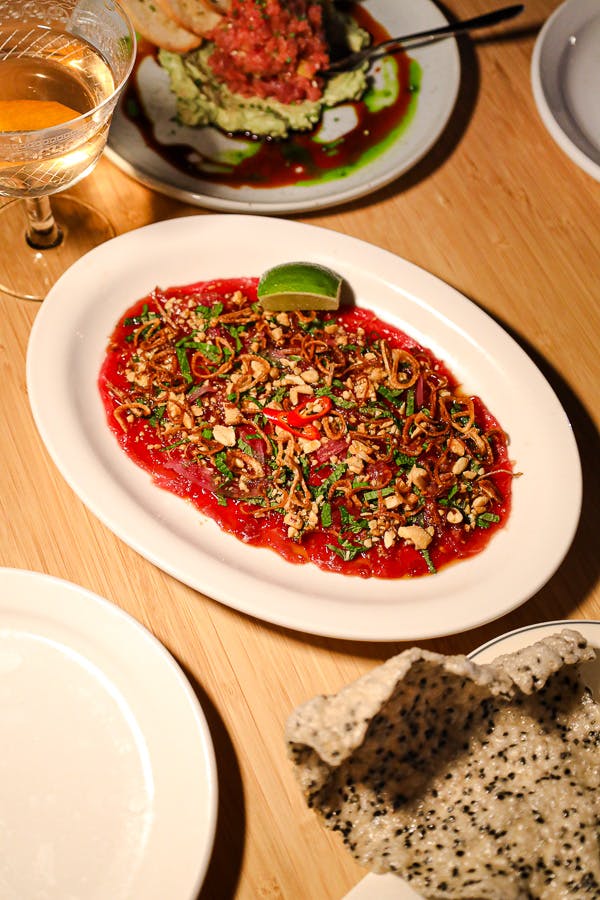
Tran’s contribution is the Vietnamese-style beef carpaccio from DD mau. Razor-thin slices of rare beef are steeped in a signature sweet-and-sour vinaigrette, whose this-just-took-it-up-several-notches ingredient is tamarind. Crispy shallots, crunchy peanuts, fiery Thai chilis and a handful of fresh Vietnamese herbs multiply the textures and punch up the flavours exponentially. Resembling a deep-fried cloud, a crunchy black sesame cracker is ideal for scooping all this beefy goodness into your mouth.
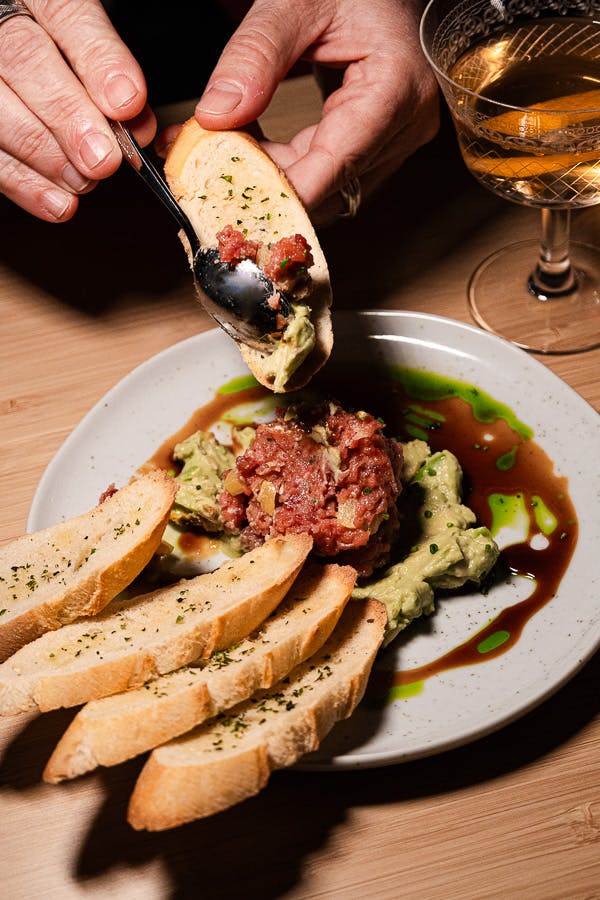
Equally raw and pulsing with flavour is the tuna tartare. The tuna in question is bluefin and it’s marinated in teriyaki, takuan (pickled daikon radishes) and green onion sesame oil. Interspersed with slices of creamy jade avocado, the plate is garnished with dollops of teriyaki and mayo. Although the presentation is artfully composed, it’s also an invitation to make a big mess as you pile the various components greedily onto accompanying slices of sage garlic bread.
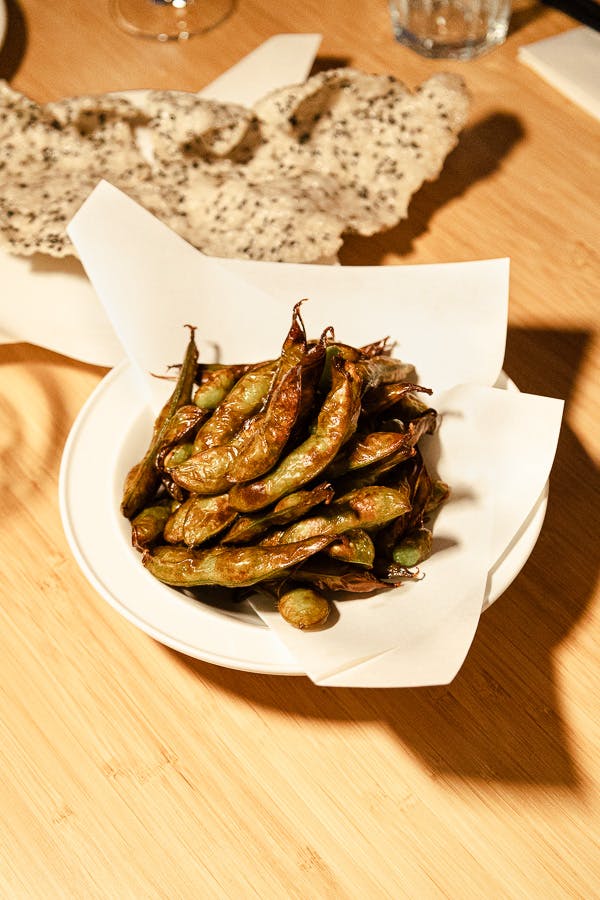
One of several vegan and vegetarian options, the edamame breaks with tradition by arriving in a glorious state of deep-fried crispiness. Before being dipped into hot oil, the pods are soaked in a salt soy marinade whose unexpected, but highly addictive zing is such that, instead of using your fingers, you’ll pop the entire shell into your mouth to release the tender green beans inside.
As a ramen bar, Kaminari takes its bar offerings as seriously as does its broth. The wine list is built around a selection of all-natural, low-intervention wines, largely sourced from Europe. Chosen for their approachability, they lean towards the dryer end of the spectrum.
The sake list is also designed to hit most people’s palates, says Jacky, who chose to focus exclusively on traditional-style Junmais imported directly from Japan. Their pure rice content makes for pours that are clean and floral, easily enjoyable in the manner of a fine wine.
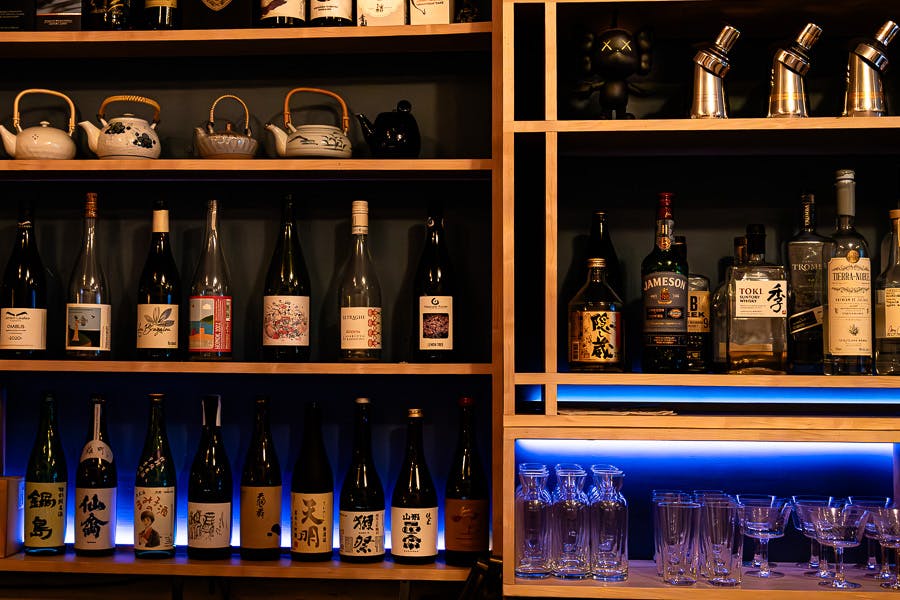
A marvel of concision, the beer list consists of a single brew: Asahi. With one lone beer to focus on, Matsuura and Tran went all out, tracking down a state-of-the-art Hoshizaki craft beer dispenser. Sitting regally, in full view of the bar, it assures that every single pour is topped by a one-inch collar of velvety foam.
When it comes to liquor, there’s a little more choice, but no less attention spared. Kaminari’s cocktail program is very much a collaboration between Jacky and Matsuura, based on the bold flavoured drinks both gravitate towards. This mutual predilection is reflected in the presence of Japanese classics such as the perennially popular highball (Kaminari’s version is made with Toki). But it also informs the less orthodox cocktails on the constantly rotating list.
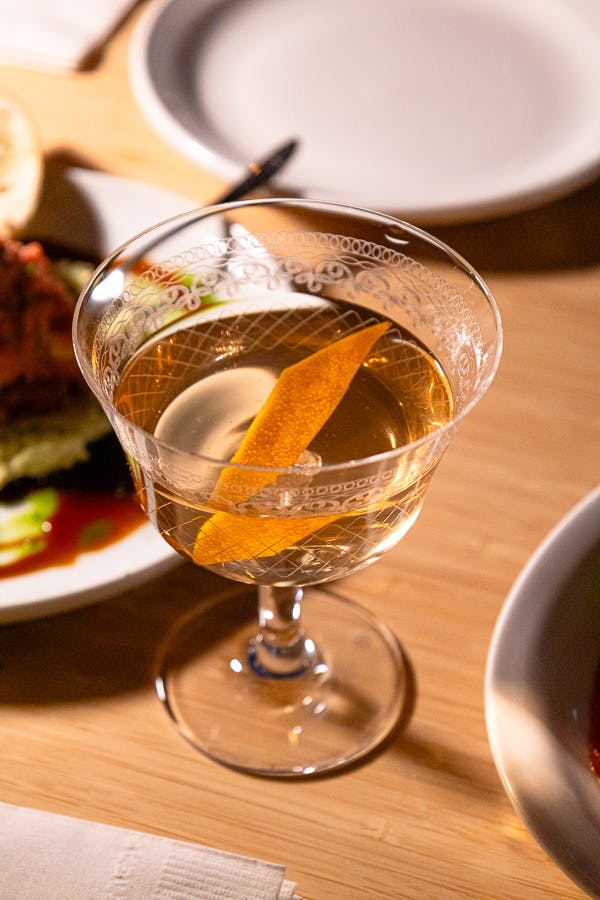
While the Negroni features traditional Campari and sweet vermouth, both spirits undergo a clarification process whereby their colours and impurities are stripped away, leaving lactic sugars that imbue the drink with a smooth, silky texture. Gunpowder gin adds a refreshing hit of green tea herbaceousness to the proceedings.
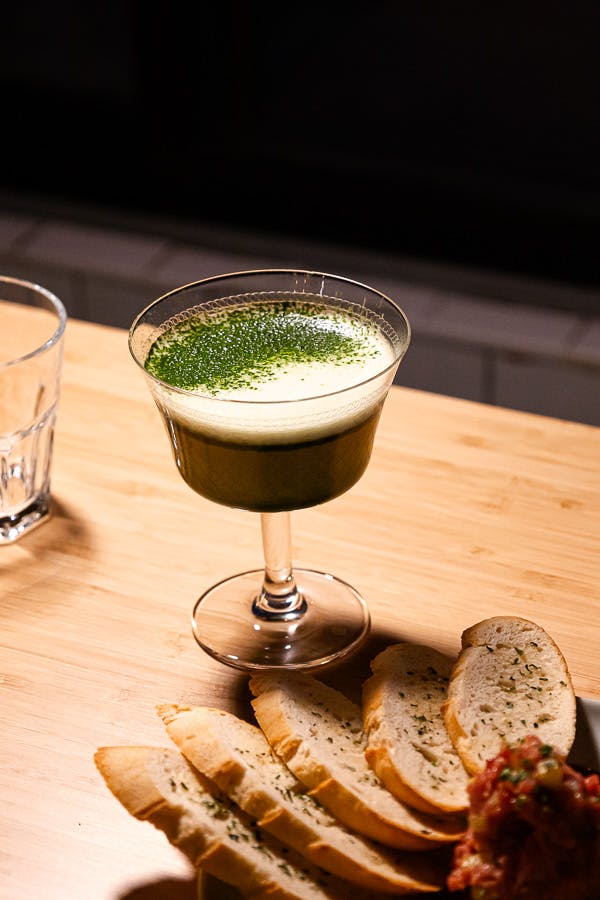
Even more tea forward is the Matcha Sour. The earthiness of ceremonial matcha tea gets all stirred up with the aged vanilla sweetness of Havana Club 7-year rum before receiving a delightful little kick of anise courtesy of absinthe. The bewitchingly green concoction is crowned by a soft egg white foam.
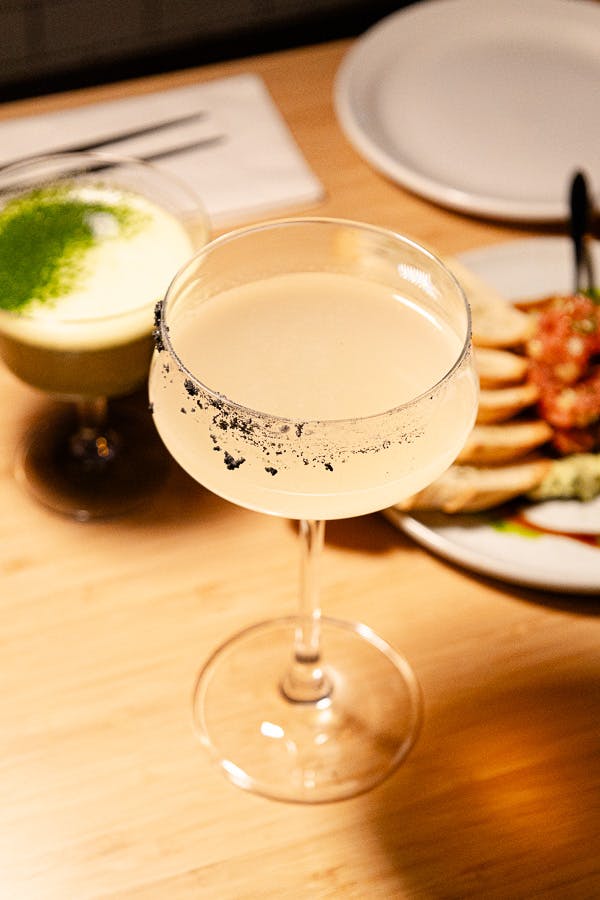
Flaunting as much personality as its predecessors is the Sumi Margarita. A base of Tromba tequila branco gets unexpected bite from pineapple vinegar, made in house. Although dry curacao helps to mellow things down a bit, to keep your tongue on its toes, the rim is liberally dusted with charcoal salt.
As the drinks flow and the night wears on, the staff slowly turns down the lights and cranks up the tunes. Somewhat miraculously, however, they don’t stop serving food. Indeed – to the joy of night owls, Parkdale residents and chefs and restaurant crews who finish their shifts at a traditional hour – Kaminari’s kitchen stays open until 30 minutes before closing. This means that (yes!) you can actually get your ramen fix at 1:30 am (11:30 pm on weekdays). In a city where most kitchens have early curfews, that’s definitely worth making noise about.
Recommended For You